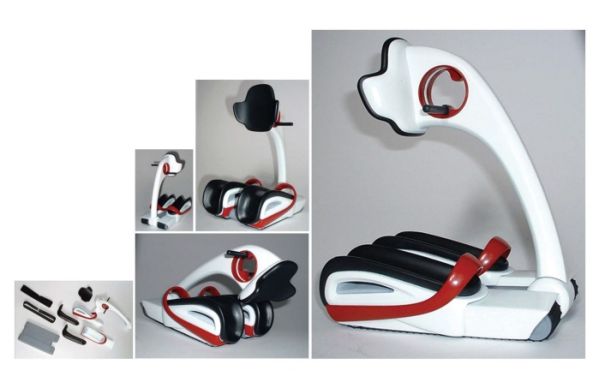
For people with disabilities, nothing is scarier than being in a high-rise building when an emergency strikes. The very thought of being in a wheelchair and caught on higher floors of a building when the elevators are rendered unsafe and useless, and the only other way out is through the stairs, can be harrowing. Even for emergency workers and members of the public, trying to get the wheelchair-bound out of a high-rise and to safety can be quite a challenging task.
This is where this revolutionary new wheelchair concept created by Steven Corraliza with Adam Cassino, Dane Tucker and Nick Roosen in partnership with Way ne State University engineering students can be a real miracle worker. Dubbed the SafeScape, this Emergency Evacuation Chair concept looks to serve as an effective tool that allows people with physical disabilities or ailments that are confined to a wheelchair, to independently evacuate themselves from a high-rise building safely.
The target consumer of the SafeScape are people with reduced mobility, the blind, the asthmatic, the deaf, people who are injured, the elderly, parents with infants, pregnant women, the arthritic, the epileptic, and angina patients. Statistics suggest that 10% of the population living in developed countries would have difficulty negotiating stairs in an emergency which leads to a higher possibility of human tragedies and injuries.
The statistics and studies sponsored by the UN suggest that this 10% of the population face a potent threat from power failure, terrorist attacks, false alarms, or disasters like fires, building collapses, or earthquakes. The SafeScape makes perfect sense for people in wheelchairs living in these parts of the world who can use the device to get themselves out of high-rises in emergencies.
The SafeScape is stored in its case until the front red panel is pushed in. In an emergency, the users push themselves out of their wheelchair essentially falling into the SafeScape with minimal or no use of their legs and into a laying or kneeling position on the emergency evacuation aid. The unit automatically releases from wall housing when foot-plates are depressed and the product self assembles from the wall housing.
The front of the case slides upwards while the bottom falls out enabling the SafeScape to roll out of the case. On its way out of the case, the SafeScape’s spring-loaded tower rises once the SafeScape is out of its case. The user must then position themselves onto the device, sitting on their knees letting their upper half of their bodies control their body positioning. The hand drive system enables the user to maneuver the SafeScape once aboard. Each side of the drive independently controls its corresponding track so users with restricted hand movements can also use the SafeScape with ease.
Via: Coroflot

